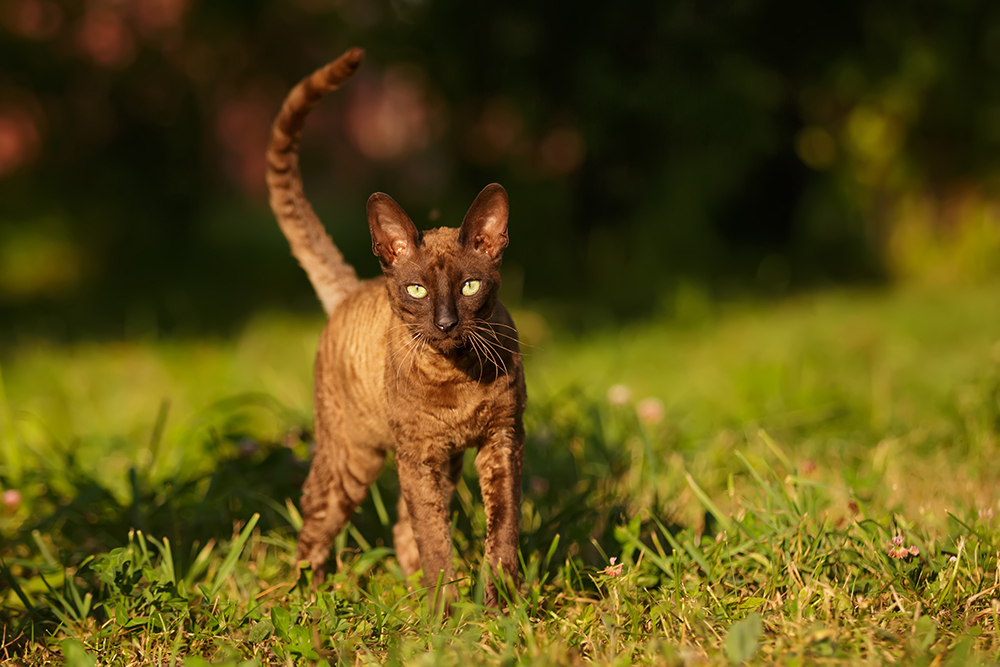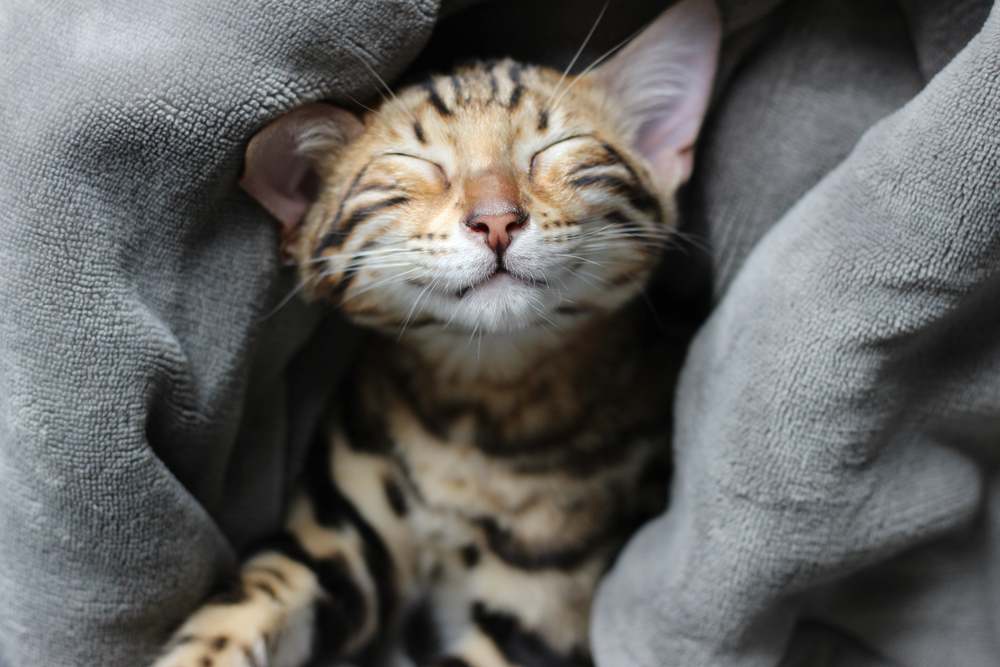If you ask any pet owner, they will emphatically say that their cats have feelings. They say their cats express love and affection, and can even recognize and respond to what their caretakers are feeling. And it turns out they were right about their feline companions!
Research supports the hypothesis that our cats experience six basic emotions of surprise, fear, disgust, sadness, happiness, and anger. These are all emotions that we would expect to see in a 2 ½ year old child. Scientific evidence is currently lacking that cats are capable of more complex secondary emotions, such as compassion, shame, jealousy, and frustration. Let’s learn a little more about cat feelings and emotions below.

Basic Cat Emotions and Body Language
Let’s consider how cats express their feelings. Visual communication is important for animals because it helps avoid conflicts. It can indicate how they feel, whether a territory is occupied, and readiness during courtship.
You can tell a lot about how your pet is feeling by observing and studying their body language. For example, a cat with a raised tail or a question mark shape is ready to interact. Meanwhile, a cat flicking their tail back and forth indicates their irritation. Woe betide the man or animal who is behind the wagging tail! That is a cat that is agitated and may strike if angered.
These postures are examples of six basic emotions that pet owners are likely to see most often. Interestingly, research has found evidence of heritability of certain behavioral traits that speak to emotions. One study even identified Angora and Turkish Van cats as the most aggressive of the breeds studied.1 Also, scientists have found socialization differences among the breeds, with the British Shorthair being the least human-seeking compared to the Ragdoll’s outright friendliness.
Selective breeding undoubtedly plays a role because enthusiasts will always choose which traits to encourage. This study also found a high degree of heritability of aggression and shyness in cats.
The cat’s emotions are still visible in their facial expressions. An ambitious team of researchers studied these features in 50 cats over the course of a year. Scientists have identified 276 different facial expressions that cats use to communicate with each other and express their emotions. They consist of a mix of 26 unique facial movements.2 For comparison dogs, which we can consider highly expressive, there are only about 27 facial movements, but we are generally better at interpreting them.

Inherited Behaviors Versus Learned Responses
Unlike dogs, cats are very much in touch with their wild side. Domestication has changed only 13 genes in the 12,000-odd years we’ve been together. Amazingly, our feline companions share 95.6% of their DNA with the tiger!3 We can conclude that most of our cats’ behavior and associated emotions are learned responses. After all, they are intelligent animals, and they even know when you are talking to them.
Vocalizations
Another inherited and learned form of communication exists through vocalizations. Science has documented 21 different vocalizations in our feline companions. That in itself gives confidence to cats with feelings. They have a lot to say with all those sounds. Research has shown the profound impact domestication had on their repertoire in some unexpected ways.
For example, cats learn and respond to their names even when someone unfamiliar to them says them. Research has also shown that our feline companions look to us when presented with an unfamiliar object for cues on how to respond to it. Animals adjust their emotions accordingly. These findings suggest the recognition of emotions and the ability to adapt to new situations. Let’s consider how this affects vocalizing.
Purring
Purring is one of the classic feline vocalizations. Interestingly, only small cats roar, while most big cats roar. Exceptions are the cheetah and cougar. A species cannot be made the same because of their different anatomies. Purring serves several purposes for cats. Kittens, like human babies, are born helpless or altricial. They are completely dependent on their mothers. Purring is a form of communication between them.
People also have difficulty responding to cries. It is necessary for our survival. Kittens may purr shortly after they are born, supporting this role. People respond equally well to purring, even among non-cat owners. It’s like a baby sound we hear. Kittens do this to get their mother’s attention, so your pet may also purr to get something from you, such as food or affection. This goal is unique to domestication.
The cause and effect is that your cat wants something and he has figured out what he has to do to get it. That comes from experience and conditioning reinforced by positive reinforcement. Your pet purrs, and you obey.

meow
The meow is the quintessential feline vocalization. Children learn how cats make this sound early in their learning. Sounds and kittens seem to be intertwined. However, the reality tells a different story. Cats purr, but this is usually communication between kittens and their mothers. This is not something you often hear about in this life stage in feral or feral cats. Like purring, this is another product of domestication.
Our pets need to communicate with their emotions to express themselves. The way in which they do it speaks to their intelligence. However, it worked. We respond to meowing like purring. Every time we respond, we reinforce its effectiveness. Combine this concept with the notion that cats can read our emotions and respond to us.
Emotional Recognition
The development of feelings has been a long time in the making. Research shows that cats bond strongly with their caregivers, unlike dogs or even children. These findings are fascinating, given the stereotypical perception of cats as aloof and unattached. The evidence speaks for itself, with name recognition and sentiment. Separation anxiety is an extreme example of the bond between cats and their owners.
Compelling evidence of the presence of emotions in our pets exists in research involving cat blinking and eye blinking. Scientists know that cats use their eyes to communicate with conspecifics. Emotions run on both ends of the spectrum. A study found that these gestures are associated with positive emotions between humans and cats. Researchers liken it to a cat’s smile.
You blink, and your cat responds in kind. It is a shared moment between owner and pet that symbolizes love for each other on a personal level. It never got better.

Final Thoughts
The evidence is clear: Cats have feelings. Our feline companions bond with us emotionally in relationships that reinforce and nurture these feelings. You may see your cat differently, you know what is between their cat’s eyes. However, their feelings will continue to draw us closer as time goes on.
Featured Image Credit: Mariia Romanyk, Shutterstock


